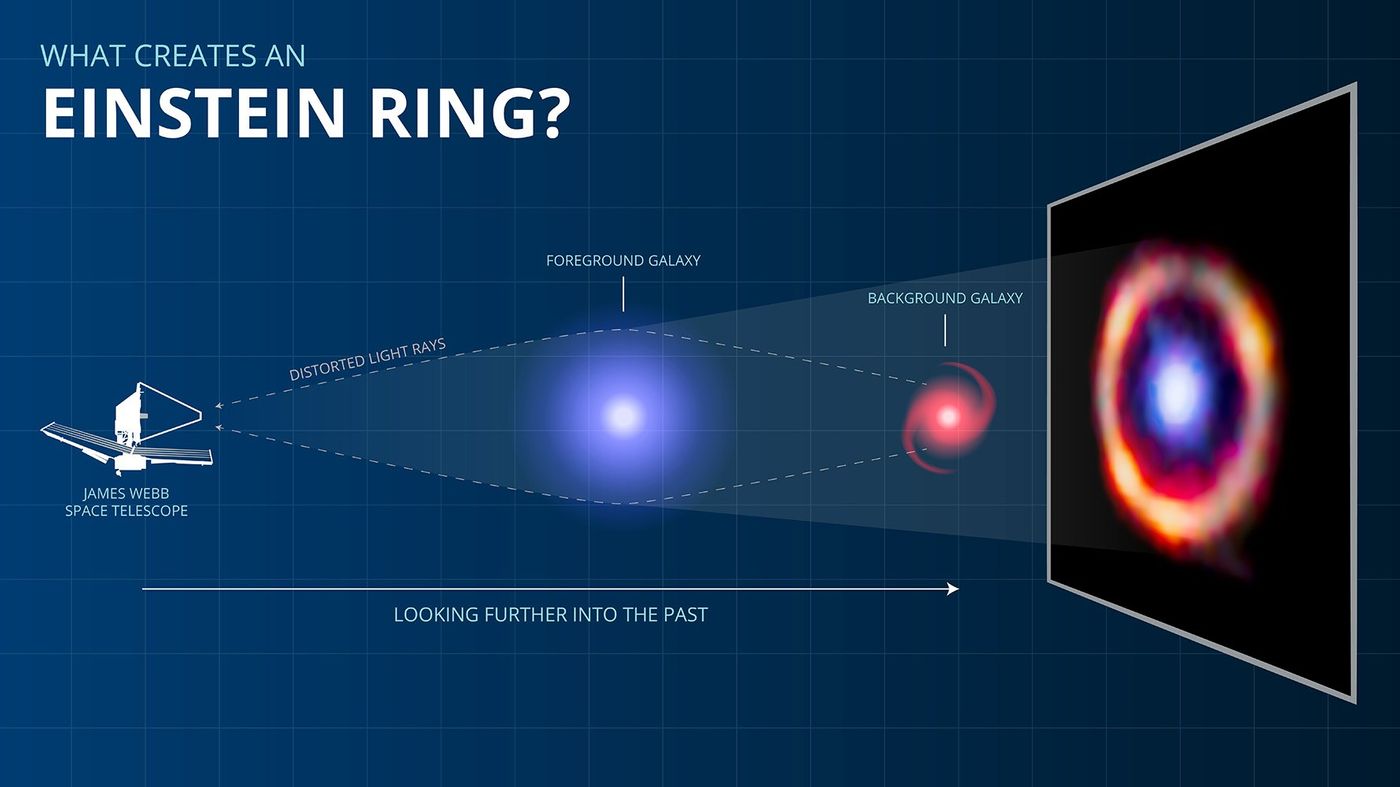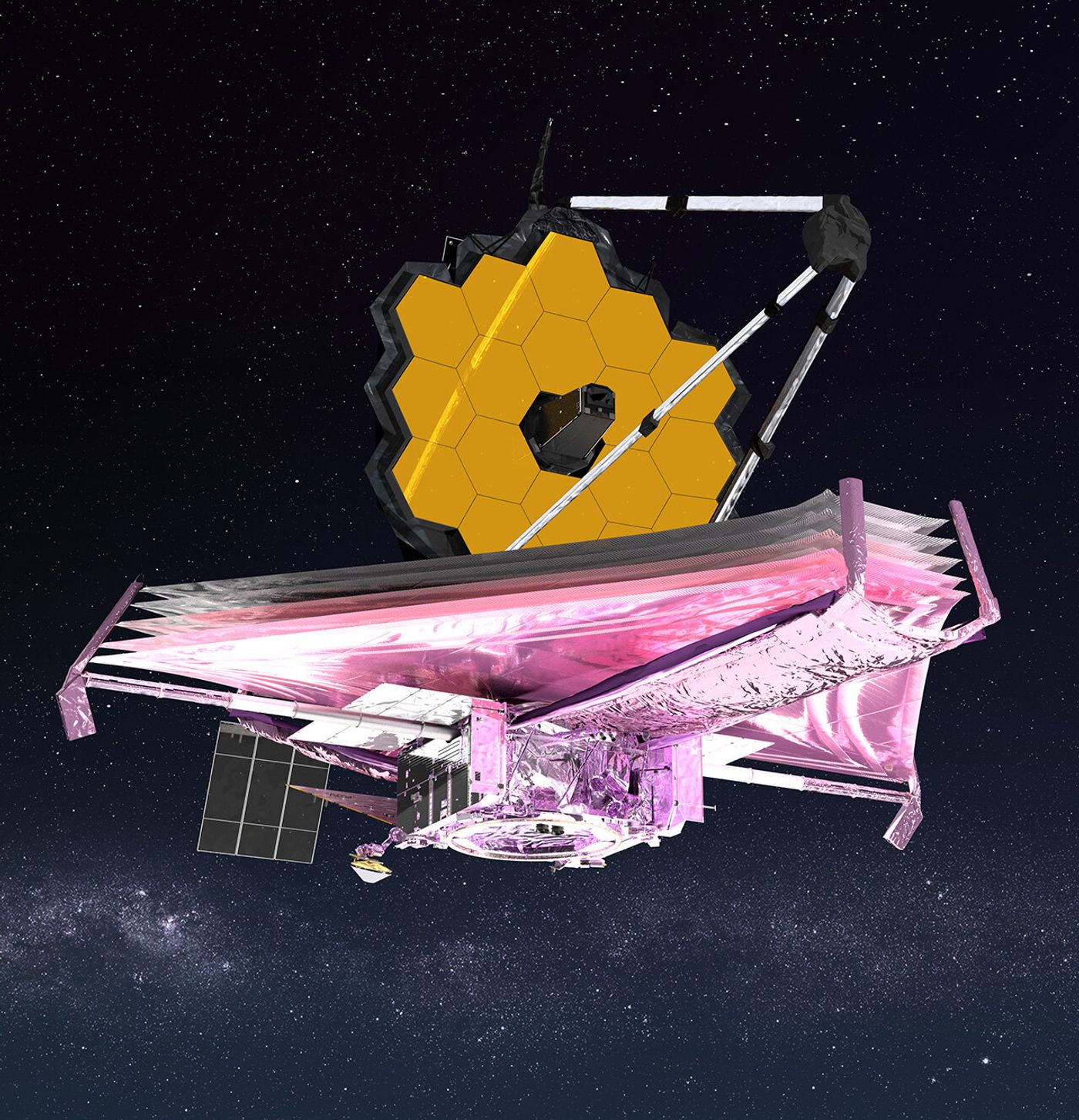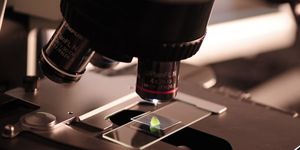NASA's Webb Detects Complex Organic Molecules in a Galaxy Far Away
NASA’s James Webb Space Telescope (JWST) keeps turning heads with one amazing discovery after another, as a recent study published in Nature examines how JWST used an astronomical phenomenon known as gravitational lensing to detect complex organic molecules in a galaxy far, far away, or 12 billion light-years from Earth. The complex organic molecules in question are commonly comprised to make up soot, smoke, and smog here on Earth, and could help astronomers better understand the chemical reactions that lead to the formation of new stars throughout the universe.
Infrared image from NASA's James Webb Space Telescope (JWST) of a galaxy that resides about 12 billion light-years away where complex molecules were detected. JWST used graviatational lensing to observe the distant galaxy, which appears as a red ring in the image, as it's light is being bent by the foreground galaxy, depicted in blue. (Credit: J. Spilker / S. Doyle, NASA, ESA, CSA)
As stated, the astronomers used a phenomenon known as gravitational lensing to make the remarkable discovery, which is when light is from a distant object interacts with a gravitationally strong object, like a star or galaxy, whose immense gravity then bends the light around it making the distant light observable from the other side. In essence, the gravitationally strong object acts as a gravitational lens that magnifies light from distant objects to be observed that otherwise wouldn’t be able to be observed directly.
Illustration conveying how JWST used gravitational lensing to discover complex molecules approximately 12 billion light-years away. (Credit: S. Doyle / J. Spilker)
“By combining Webb’s amazing capabilities with a natural ‘cosmic magnifying glass,’ we were able to see even more detail than we otherwise could,” said Dr. Justin Spilker, who is an assistant professor in the Texas A&M Department of Physics and Astronomy, and lead author of the study.
Since the molecules were detected 12 billion light-years away, this means that they existed approximately 1.5 billion years after the Big Bang. This also means the molecules existed approximately 500 million years after a period known as the Dark Ages—when clouds of gas and dust to create stars and galaxies existed throughout the young universe, but no light was present—ended.
JWST detecting molecules like smoke and smog is traditionally interpreted as new stars being born, said Dr. Spilker, but he emphasized that the study’s findings indicate this might not be the case in the early universe.
“Thanks to the high-definition images from Webb, we found a lot of regions with smoke but no star formation, and others with new stars forming but no smoke,” said Dr. Spilker.
Launched on December 25, 2021, and officially beginning its science operations in July 2022, NASA’s JWST has used its infrared cameras to revolutionize the way we observe the universe from the very first images it captured. Since that time, it has taken breathtaking images of Jupiter, analyzed an exoplanet’s atmospheric chemistry, and has now made its first detection of complex molecules in the very young universe, which will likely not be it’s only time.
Artist rendition of NASA's James Webb Space Telescope. (Credit: NASA GSFC/CIL/Adriana Manrique Gutierrez)
What new discoveries will JWST make about the universe, and specifically the early universe, in the coming years and decades? Only time will tell, and this is why we science!
Sources: Nature, European Space Agency, Texas A&M Today, SciTechDaily, NASA, NASA (1), NASA (2), NASA (3)
As always, keep doing science & keep looking up!











